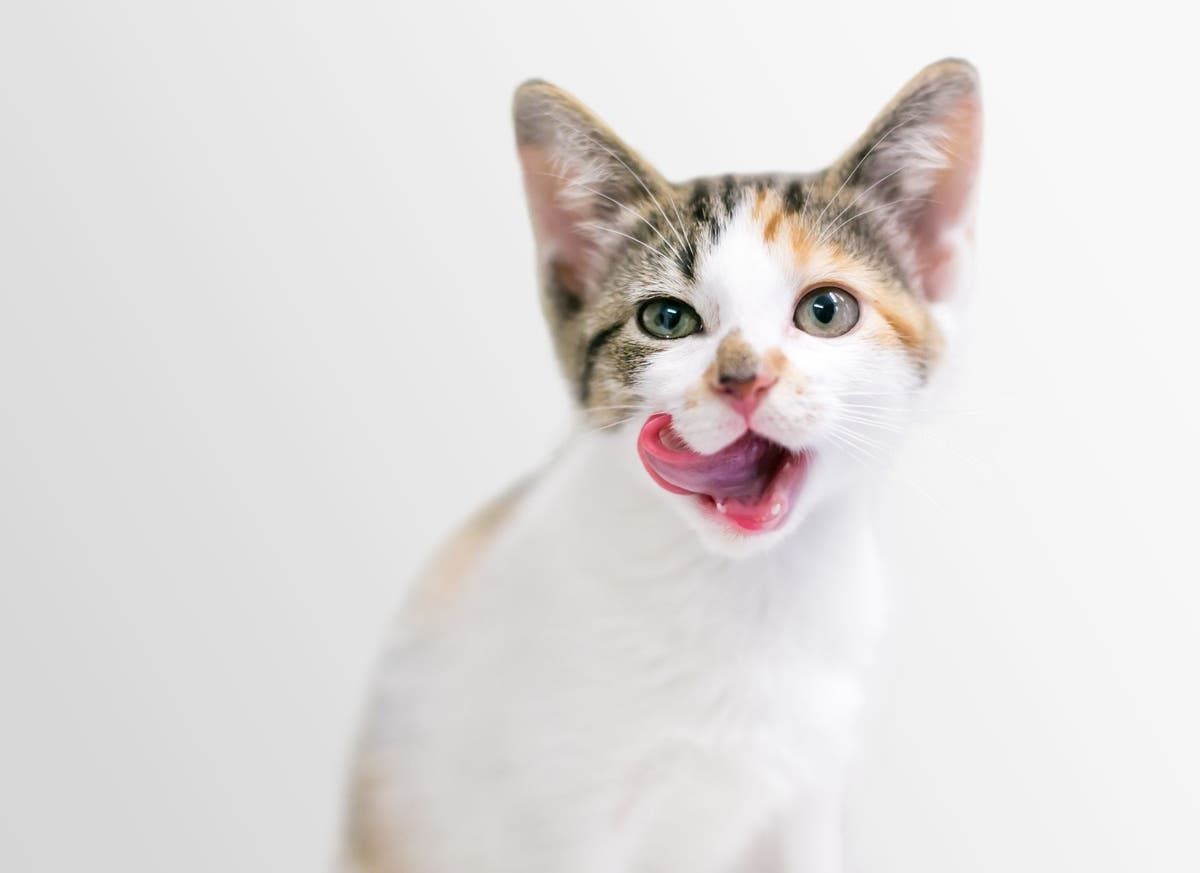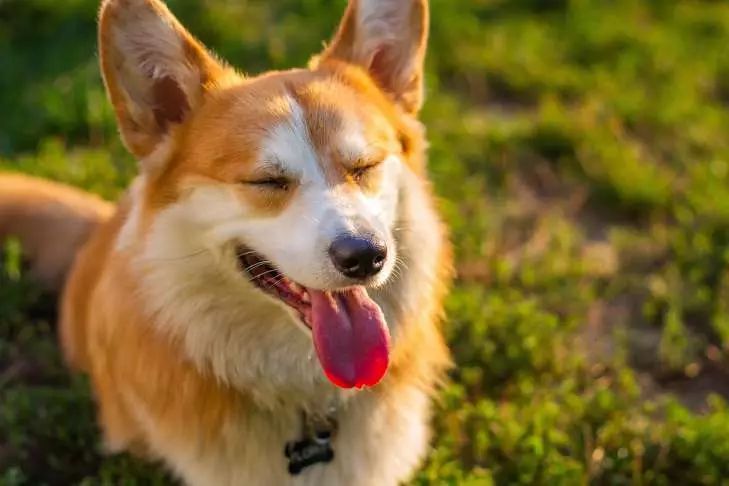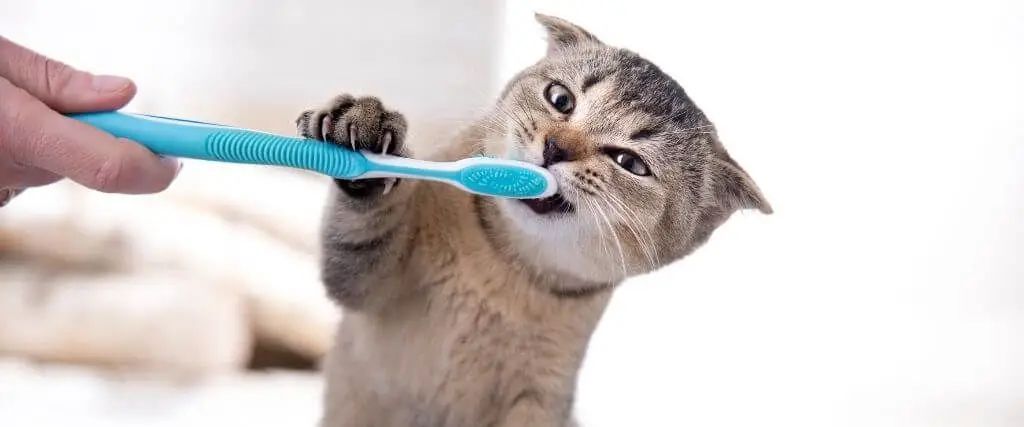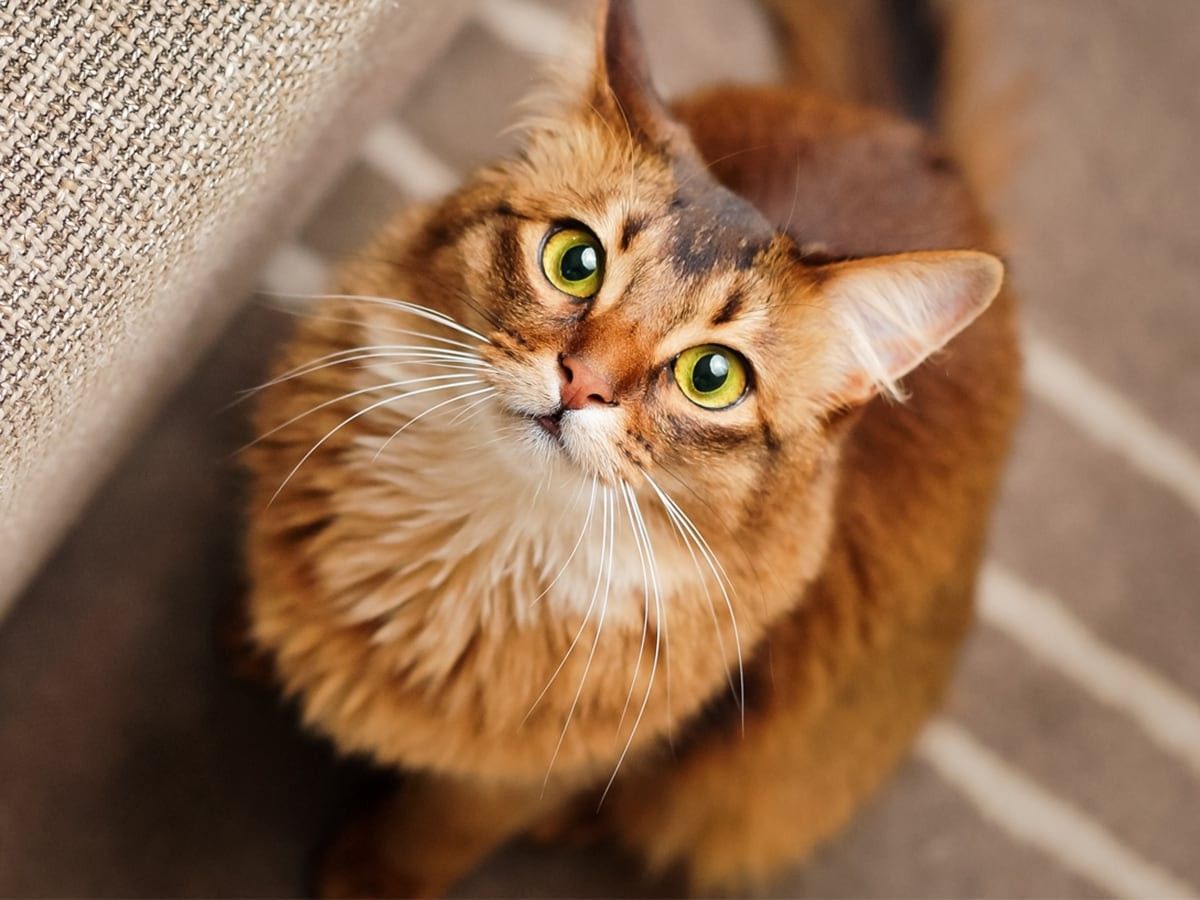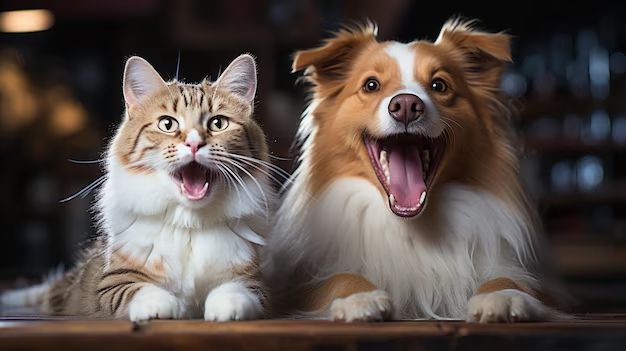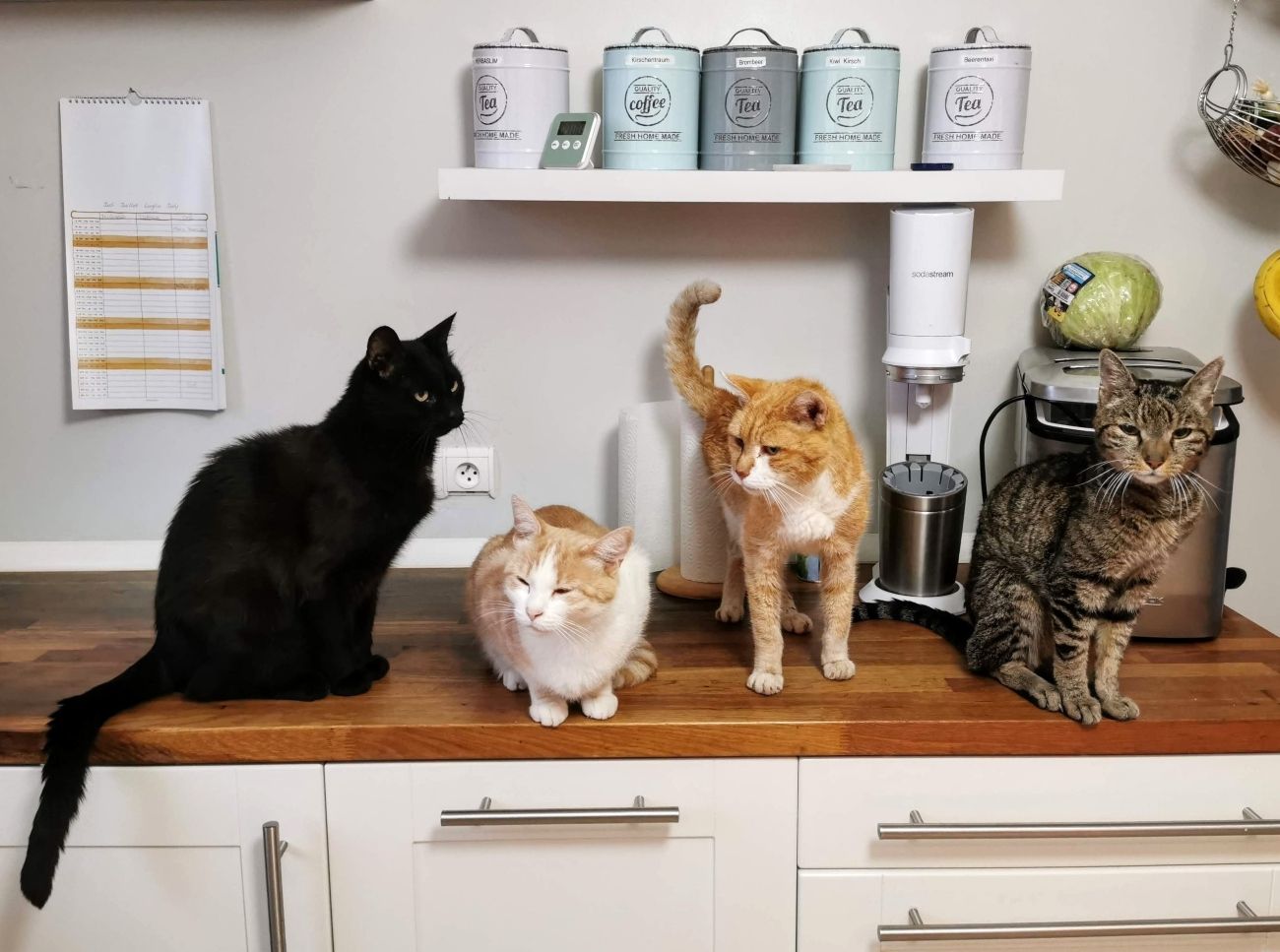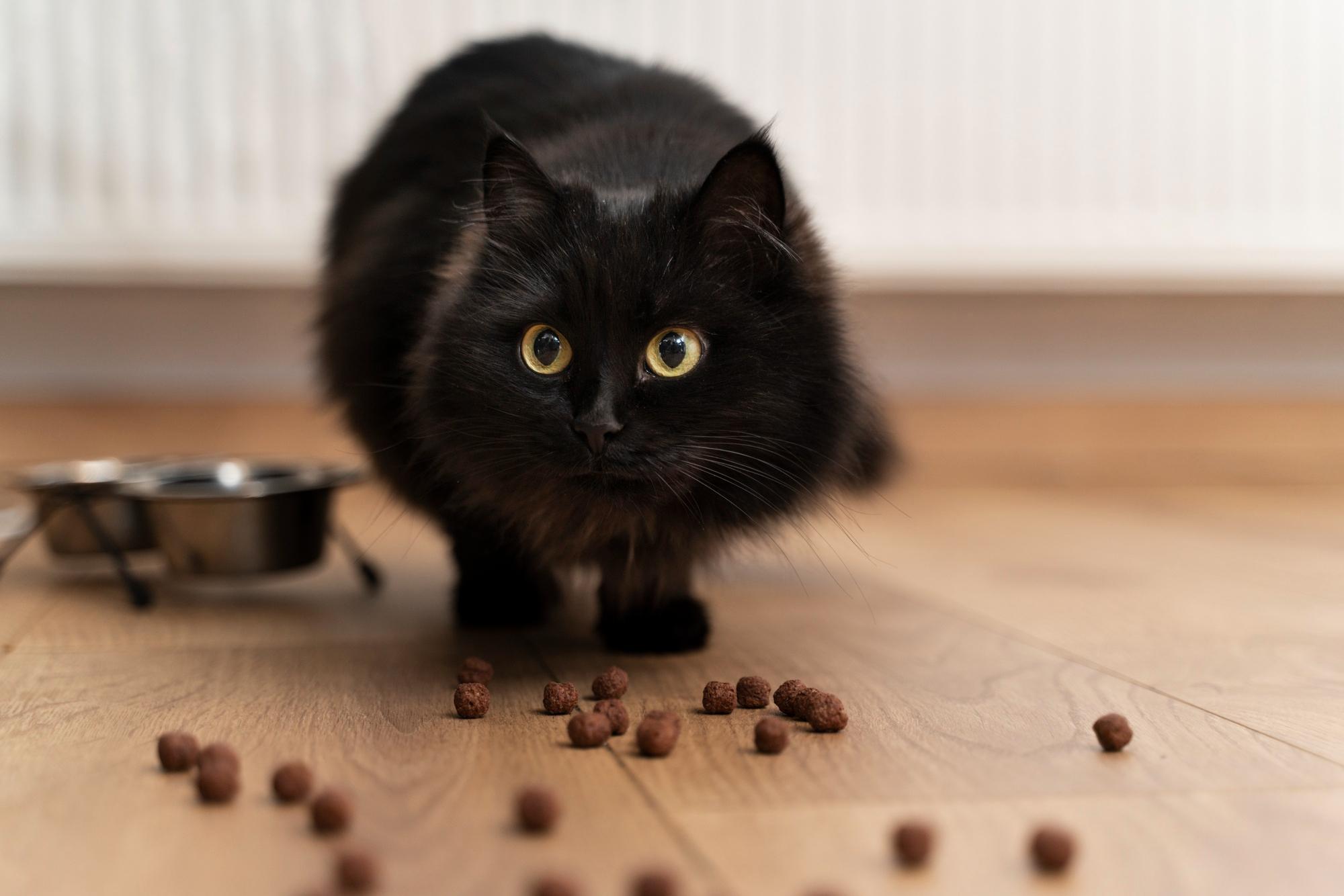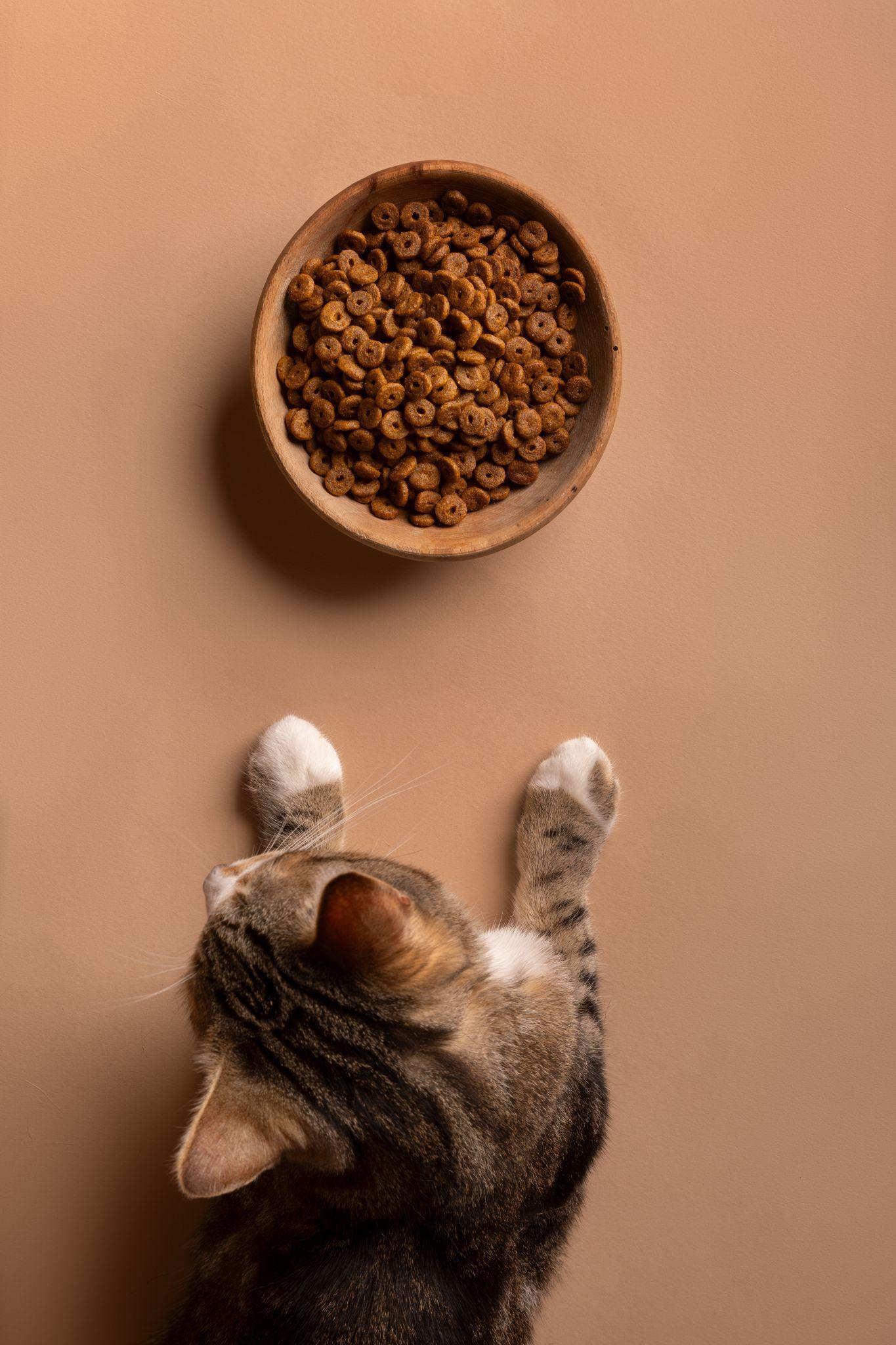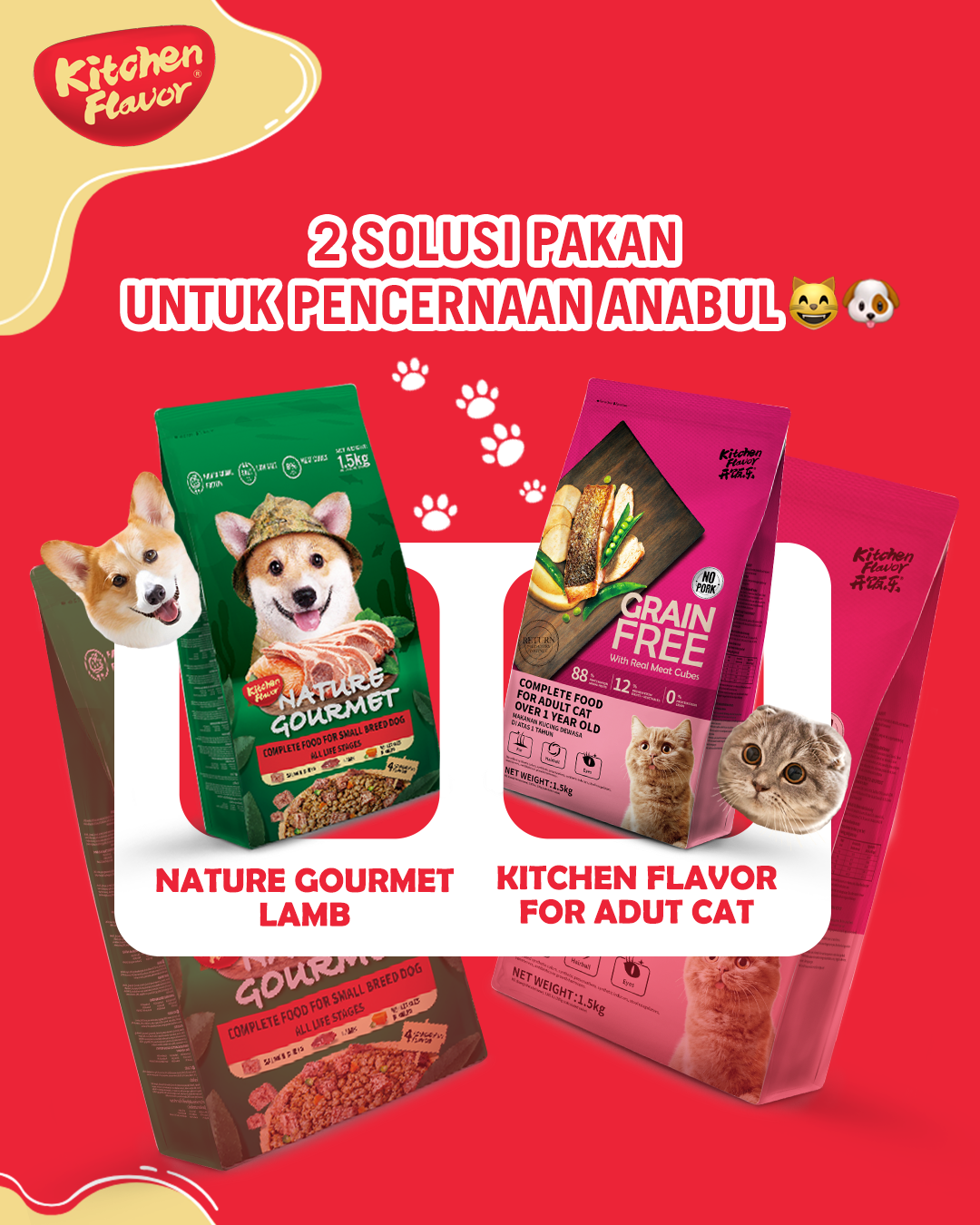Some people gravitate toward big dogs. They love Mastiffs who think they’re lap dogs or Bernese Mountain Dogs that make everything around them seem small by comparison. The list of big breeds goes on and on—from slender Afghan hounds to clumsy Great Danes, slobbery St. Bernards to fluffy Cuvacs. These breeds are all unique and different in their own way, but all have size in common.
Unfortunately, with size comes the potential for certain illnesses and health conditions. Bigger dogs are more prone to specific ailments that their smaller cousins might not experience. It’s important for big dog lovers to understand this and to be aware of the conditions that may pose a threat for their oversized companions.
Here’s a look at eight ailments that commonly affect large-breed dogs—what they are and what they mean for the health and wellbeing of your pet.
1. Dysplasia
Dysplasia can occur in the hips, elbows or both. It’s a condition that arises when the hip or elbow joint doesn’t fit properly into the socket and deviates, causing everything from pain during walking to lameness. While German Shepherds are the breed most commonly associated with dysplasia, many larger breeds suffer a proneness to developing it. Mastiffs, Great Danes, and Great Pyrenees all have a higher-than-average risk of suffering from hip or elbow dysplasia. Many times, surgery can alleviate the pain associated with the condition.
2. Panosteitis
Because they grow quickly and to such great sizes, many large-breed dogs suffer from Panosteitis (Pano) during their maturation. This condition affects the legs and can cause everything from temporary lameness to pain. It’s a condition defined by bone inflammation and often goes away by itself in time. That doesn’t make it any less painful for your pup, though! Pano is similar to growing pains in humans, which means your pup can benefit from gentle massage and rest.
3. Dilated Cardiomyopathy
Dilated Cardiomyopathy is a condition affecting the hearts of larger dogs—specifically the different chambers of the heart. Dilated Cardiomyopathy causes the heart to literally swell, which stretches the aortic walls too thin. This, combined with inflammation of heart tissue, makes Dilated Cardiomyopathy a dangerous condition for bigger pups. Unfortunately, it’s also a lifelong condition, but it can be managed with medication.
4. Aortic Stenosis
As something of an opposite to Dilated Cardiomyopathy, Aortic Stenosis involves the narrowing of aortic valves, which decreases blood flow. Many times, dogs can seem perfectly normal until the aortic valve becomes too restricted, and they collapse due to lack of blood flow. It’s a condition primarily affecting bigger dogs and is hereditary, which makes it easier to identify if you have a consistent lineage. This condition can be managed if discovered early.
5. Spondylolisthesis
Bigger dogs have bigger physiology, which can cause spinal issues to form. Spondylolisthesis is one of them. Often called “wobblers” because of the way a dog sways back and forth, spondylolisthesis is an abnormal curvature of the spine. Unfortunately, the disease is progressive and will degenerate your dog’s quality of life without proper management. Medication can be effective in some cases; however, surgery is often recommended. Even then, there’s no stopping spondylolisthesis—only delaying its effects.
6. Cherry eye
Cherry eye is one of those conditions that doesn’t necessarily affect bigger dogs—rather, the specific breeds prone to cherry eye are larger breeds. While it’s most associated with Mastiffs, other “droopy” dogs are prone to developing cherry eye. This condition sees the dog’s third eyelid protrude from the eye, causing a painful mass that can make it difficult for them to see. Left unchecked, it’ll become more and more inflamed and red—thus the name, “cherry eye.” It’s correctable with surgery.
7. Arthritis
The bigger the body, the more gravity takes its toll. As a result, bigger dogs are more prone to developing arthritis in their joints, including the knees and elbows. Arthritis tends to set in during the latter half of a dog’s years, so it’s important to start watching out for signs after your big breed turns 5 or 6 years old. If they seem to have trouble getting up from a laying position or are reluctant to use stairs, it might be time to chat with your vet about potential arthritis management strategies.
8. ACL tears
Big dogs are known for their powerful muscles and strength. Unfortunately, they don’t always have the strongest ligaments to support them. As a result, larger breeds commonly face ligament tears and strains—especially ACL tears. All it takes is one sharp turn at a high-speed gallop to cause a tear or strain that might leave your poor pup limping. You can help them avoid ACL tears by exercising them regularly and keeping them within healthy weight parameters.
Big breeds need extra love!
Every breed has their own unique health concerns to worry about—big dogs especially. Understanding some of the potential afflictions your big pup might be up against can help you protect them and make sure they get the care they need. Consult with your vet about any of these conditions and how to manage them if your big breed is diagnosed with one.
Source: https://petwellbeing.com/
Years of lavishing a pet with treats can leave them appearing a bit large around the gut. Obesity in pets can sneak up on you, and once all those extra pounds are on, they’re hard to get off!
Some pet owners might be tempted to turn to weight loss supplements as a quick way to help their pup shave off some fat. However, it’s not always guaranteed that these pills actually work—or that they’re safe for your furry friend. Get the facts on weight loss supplements to ensure you’re making healthy decisions for your pet.
Rule #1: Ask your vet for advice
Always check with your vet before purchasing a weight loss supplement. Many are available over the counter at pet and health food stores, but that doesn’t necessarily mean they’re safe. Supplements are largely unregulated and could put your pet’s health at risk if you don’t know exactly what’s going into their body. Your vet should always determine whether weight loss supplements are appropriate for your pet and which ones contain the ingredients that will help your pet the most.
Veterinarians usually recommend weight loss supplements only as a last resort, because even the most popular brands available today have inconsistent results. For instance, many have praised chitosan for its ability to excrete fat cells from the body. The truth is, studies demonstrate that the level of fat excretion is often too small to make an impact on your pet’s weight loss. Some weight loss supplements are potentially dangerous! For example, some studies have linked conjugated linoleic acid (CLA) to an increased risk of insulin resistance and diabetes.
Additionally, weight loss supplements can be risky because you never know how they’re going to interact with your dog’s breed and health conditions. Owners who don’t consult a vet for guidance might accidentally give their pet the wrong dosage. Smaller dog breeds can’t handle the same number of milligrams a vet might prescribe to larger ones.
The bottom line is that weight loss supplements may help your pet, but they should never be given without veterinary approval first.
Potential weight loss supplements for pets
If they deem it necessary, vets can prescribe one of several weight loss supplements. Omega-3 fatty acids have been approved for dogs in the form of fish oil. This compound has been found to encourage weight loss in cats and dogs. Omega-3s also have a range of other health benefits for pets! Vets recommend a supplement instead of actual fish because the latter can add extra calories to your dog’s diet.
Alternatively, vets might recommend sprinkling white kidney bean extract on your dog’s food to aid in weight loss. White kidney beans prevent starches from breaking down into simple sugars by blocking an enzyme called alpha amylase. Sugar provides both dogs and humans short-term energy but is considered unsustainable in the long run. As a natural starch blocker, white kidney bean extract encourages your dog’s body to derive energy from fat and proteins, instead.
Dirlotapide is another popular choice among veterinarians. It was the first FDA-approved weight loss supplement designed exclusively for dogs and is available only with a prescription. Dirlotapide suppresses a dog’s appetite by accumulating fat in the intestinal tract. The medication prevents fat cells from getting absorbed into the bloodstream, which leads to a dog feeling full. Unlike other supplements available on the market, multiple studies have confirmed that dirlotapide is both safe and effective for weight loss in dogs.
Prevention is key in pet weight management
When it comes to weight gain and obesity, prevention is the best medicine. It’s much easier to keep the weight off to begin with than to treat a pet who’s accumulated extra weight. Owners can help their pets maintain a healthy weight by placing them on a calorie-restricted diet and feeding them nutritious foods. No two pets are the same, so ask your veterinarian for advice on which types of foods you should be feeding your dog or cat. They’ll clue you in on which brands contain less fat, high-quality proteins and all the nutrients your pet needs.
A healthy diet isn’t complete without regular exercise. Pets need a balance between their caloric intake and how much energy they burn every day. Make sure your cat or dog gets up and moves around in some way, whether that be daily walks, play time with chew toys, fetch or running around outside. Your vet can suggest more ideas for how to encourage an active lifestyle that keeps off the extra weight.
More research is needed to prove the effectiveness of weight loss supplements for overweight cats and dogs. A few of them might work, but owners should administer them based on guidance from their veterinarians. Only a professional can recommend supplements with proven results and steer you away from ones that aren’t worth it.
Source: https://petwellbeing.com/
When you first adopted your cat, you were probably given a recommendation for a particular type of food or had a preferred brand you opted for right away. However, after months or even years of providing your pet with the same food, there may come a day when you feel the need to change your cat’s food type.
In general, changing your cat’s food regularly isn’t necessary. As long as your pet is getting all the nutrients they need to live a happy and healthy life, you could feed them the same thing forever!
That being said, there are a few instances in which switching your cat to a different food is a good idea. If a change in diet is necessary for your kitty, make sure to consult your veterinarian and conduct the switch gradually for the best and safest results.
Reasons to change your cat’s food
Once your vet has approved a cat food for your furry friend, you don’t need to change it on a regular basis. However, certain health concerns may require you to seek out a new type of food that will meet your cat’s needs.
Recalls
One of the most important, yet somewhat uncommon, reasons to change your cat’s food is a health and safety recall. Once you hear about a recall and double-check that your cat’s food is included, you’ll want to remove your cat’s access to the food immediately, watch them for signs of illness and start feeding them a similar type of food that is safe right away.
Life stage
Another key reason to start feeding your cat a new type of food is that they have entered a new life stage. Most pet manufacturers sell food specific to a particular age group, such as kittens, adult cats and seniors. These food types may be fortified with certain nutrients; for example, kitten food has extra protein to help your kitten grow, while senior food may include special nutrients to help with age-related illnesses.
When your cat enters a new stage of life (from kitten to adult and from adult to senior), you should choose a new type of food that is most appropriate for their age. Speak with your veterinarian to identify the best food for your pet’s specific needs.
Allergies
Although they aren’t very common, cats can develop food allergies that are triggered by particular cat food ingredients. If your cat begins experiencing itchy, inflamed skin or vomiting and diarrhea, they may be sensitive or allergic to their food.
Feline food allergies can be triggered by a wide variety of ingredients, so you’ll want to work with your vet to identify the specific allergen through an elimination diet. During this process, your cat will need to be put on an entirely different diet.
Specific health conditions
If your cat develops a health condition over the course of their life, there may be a type of food that is more appropriate for their healthcare needs. These types of foods can vary, including everything from weight-management foods to help obese cats to foods fortified with urinary-health ingredients to assist with urinary tract diseases. Other specially formulated foods may help ease discomfort from arthritis, increase fiber to help with digestion and much more.
Similarly, if your pet’s current food doesn’t appear to be meeting their nutritional needs, you may want to switch to a higher-quality cat food that offers better ingredients and additional nutrients.
Regardless of the reason you’re switching your cat’s food, you should always consult your cat’s veterinarian before doing so to ensure the new food will be appropriate for your cat at their current stage of life and state of health. If you need recommendations for a new pet food, your vet should be able to answer questions and point you in the right direction.
How to successfully transition your cat to the new food
Once you’ve identified a new food for your furry friend and your vet has given their approval on its safety, you may be tempted to pull your cat off the old food and give them the new food immediately. However, this is a big mistake! Switching your cat’s food too quickly can lead to gastrointestinal upset, including diarrhea and vomiting.
It’s very important to switch your cat over to their new food gradually, unless making an abrupt change is absolutely necessary (as is the case when food has been recalled). The change to the new food should occur over the course of at least seven days, during which you should alter the percentage of old food versus new food slightly each day.
On day one, use a mix of mostly old food with a little bit of new food. On each subsequent day, take out a little more of the previous food while adding in more and more of the new food until your cat is eating all-new food every day.
Once you complete the switch successfully, monitor your cat for a few weeks to ensure he or she does not show any changes in behavior, health or appearance. If they do, speak with your vet about finding a new food that will be better for them.
Source: https://petwellbeing.com/
Dog owners might love to cuddle with their furry friends, but there’s little worse than being up close and personal with a dog’s mouth when they decide to yawn. All it takes is one whiff of stinky dog breath to ask yourself, “What could possibly be causing that smell?”.
No dog’s breath is going to be particularly pleasant—at least not by human standards. However, some breath ventures beyond the usual icky dog-food stench into something much worse. Extremely or unusually bad breath in dogs could actually be indicative of a health problem.
Where bad breath in dogs comes from
Most people assume that bad breath (also called halitosis) stems directly from the mouth. This is true in a lot of cases. Food particles and bacteria on the teeth and tongue are typically responsible for how your dog’s breath smells—whether it’s tolerable or one of the worst smells you’ve encountered.
However, not all bad breath in dogs is directly related to the mouth. Bacteria and acids that reside in the gut can also make their way up and cause malodorous breath. In this case, brushing your dog’s teeth isn’t likely to get rid of the stench. Instead, a more severe health problem might be at play.
Getting to the bottom of your pup’s stinky breath
Multiple things could be causing your dog’s breath to smell bad, ranging from perfectly harmless to hazardous to your pet’s health. You’ll need to consider your dog’s eating habits, potential symptoms and health routines in order to determine where the smell is really coming from.
Here are some of the most common culprits.
- Their food: Food is usually the first places pet parents look when their dog develops bad breath. This is a reasonable assumption, since food is formulated to taste and smell appealing to animals—not to us. After finishing off a meal, your dog’s breath might stink because of the food particles stuck on their teeth. Diet can also cause bad breath by disrupting the microbiome in your dog’s gut. When some bacteria grow unchecked, they can cause GI issues along with bad breath. It’s possible your dog’s food doesn’t agree with them, or might not be nutritionally balanced for their needs. However, if your dog’s bad breath develops suddenly without a change in diet, it’s unlikely that it’s related to their meals at all.
- Unsupervised eating: Another kind of food can also cause bad breath in dogs—the food they’re not supposed to eat! Dogs who like to rummage in the garbage, eat poop or attack small prey outdoors might experience a random bout of halitosis. Unsupervised snacking usually results in rotten-smelling breath.
- Oral health problems: If the problem isn’t your pet’s food, the next most likely cause is poor oral health. Plaque builds up on dogs’ teeth just like it does in humans, and this can cause bad breath. Over time, plaque hardens into tartar and can cause gum inflammation and disease. The more bacteria that accumulates on the teeth and gums, the worse the breath can get. Check your pup for red, swollen or bleeding gums and monitor their eating behavior for signs of tooth pain.
- Diabetes: Dogs with untreated diabetes might develop breath that smells sweet, fruity or like acetone. This change might not be that unpleasant, but it is important to pay attention to! The smell comes from the body producing ketones from metabolized fat. Other signs might include unexplained weight loss, increased thirst and changes in appetite.
- Liver disease: Liver disease in dogs is also known to cause bad breath. When the liver is damaged, it stops removing toxins and waste from your dog’s body. The disease typically leads to foul-smelling breath alongside symptoms like yellow gums or eyes, dark urine, weight loss and vomiting.
- Kidney disease: Kidney disease and failure can lead to bad breath, too. In this instance, your dog’s breath might smell like urine or ammonia. This is a result of the kidneys failing as your dog’s urinary filtration system. Watch for other signs like oral ulcers, vomiting and dehydration.
How to freshen your dog’s breath
At the first sign of bad doggy breath, owners might be tempted to toss their dog a dental treat and call it a day. However, treating halitosis relies on understanding exactly where the bad breath is coming from. By treating the underlying cause, you can freshen your pup’s breath in no time!
If you recently changed your dog’s food and suspect the bad breath is due to the flavor, give your dog a dental treat or brush their teeth after they eat to put a stop to the smell. You could also try a different type of food to see if the odor is more manageable. Keep your dog away from garbage they could eat and supervise them outside to make sure they don’t dig into any feces or roadkill.
It’s also smart to adopt an at-home oral care regimen. Get your dog used to daily tooth brushing, oral health supplements and dental toys or treats that keep their teeth squeaky clean. If your pet hasn’t had a professional cleaning in a while, it might be a good idea to check in with your vet and rule out gingivitis or dental disease.
After exploring food and dental care options, see if your dog’s breath improves. If it still smells bad—or if you pinpoint a sweet or ammonia smell—it’s time to visit the vet. They can run tests to see if your dog is experiencing diabetes or another disease and administer treatment right away.
Although it’s certainly unpleasant, bad breath in dogs is not something that should be ignored. If your dog suddenly develops stinky breath, take steps to determine the underlying cause and visit the vet if you have concerns about a major health problem. A single whiff could be the thing that saves your dog’s life!
Source: https://petwellbeing.com/
Keeping your cat’s teeth and gums healthy is important no matter how old they are. Unfortunately, our feline friends aren’t fond of having a toothbrush and gel used in their mouths. If your kitty refuses to let you brush their teeth, all hope isn’t lost for their oral health! There are a few other methods you can use to protect their teeth.
Here are a few of the best brushing alternatives to help your cat avoid problems like bad breath, tooth decay and periodontal disease.
Specialized food
Some specialty cat foods are designed to improve the dental health of our feline friends. These foods might contain certain nutrients that can greatly improve a cat’s oral health, including zinc, calcium and more. These types of foods are usually larger and a bit more abrasive than traditional kibble, as well. As your cat chews, the larger pieces might help knock off plaque that has built up on your cat’s teeth.
There are many different types of dental diets for cats, and some will only be accessible via a prescription from your vet. Before putting your cat on a specialty food for oral health, make sure you consult your veterinarian to ensure your cat will still be getting the appropriate nutrients and calories each day.
Adding an oral health supplement to your pet’s daily diet might also make a difference. Herbal supplements might protect your pet’s gums and help prevent bad breath and gum disease.
Dental treats and toys
Do you have a playful cat that loves toys and treats? There are plenty of “fun” cat products available that may improve their dental health! Some cat toys on the market have a flossing effect that can help clean in between your cat’s teeth. These toys are often designed to look like things cats enjoy playing with but are made from a rubberized material that’s slightly abrasive against the teeth.
In addition to dental toys, your cat might also benefit from dental sticks or treats. These specially formulated treats are designed to work similarly to dental diets and toys by removing some of the plaque along your cat’s teeth and gums. They might even help reduce your cat’s stinky breath! Keep in mind that dental treats contain calories, so they should be considered alongside your pet’s diet. Before purchasing any of these products, it’s important to do proper research and consult your veterinarian.
Dental exams and professional cleanings
Unfortunately, dental toys, treats and specialized foods are no substitute for routine brushing and cannot provide the same protection against decay or gum disease. Therefore, you should have your cat’s teeth examined by a veterinarian regularly.
During their dental exam, your vet will look at your cat’s teeth and gums to check for plaque and any signs of damage or disease. In some cases, your vet may need have an X-ray done to get a better understanding of your cat’s oral health.
Professional cleanings are also recommended for all cats every once in a while. Many vets offer teeth cleaning services, where they use anesthesia to keep your kitty relaxed while they remove all the plaque and tartar from their mouth. Cats who refuse to have their teeth brushed at home may need to have their teeth cleaned professionally more often. Discuss your pet’s oral health schedule with your vet to ensure you stay on top of any problems.
The importance of keeping your cat’s mouth clean
Dental health is something every cat owner should pay attention to, whether your cat allows you to brush their teeth or not. Teeth and gum issues in your pet can cause them great discomfort and might even cause them to lose teeth. If their oral health issues get really bad, your cat might refuse to eat, which can lead to a number of other health problems. And, if left unchecked, gingivitis can lead to more severe periodontal disease, which not only affects the mouth but the entire body.
If you’re worried about your cat’s dental health, try to do a quick examination of their mouth at home. Major problems can usually be spotted right away, including missing teeth or red and bleeding gums. If you notice these problems, or if your cat is showing signs of oral pain, then it’s best to take them to the vet right away.
Fortunately, you can help your cat avoid these tooth troubles by administering preventative oral health from a young age. Whether you brush at home or use oral health products alongside routine professional cleanings, you’ll keep your kitty’s teeth pearly white and healthy for years.
Source: https://petwellbeing.com/
Ringworm is a common skin infection in both dogs and cats. The name is a bit misleading since ringworm is not caused by a worm but by a common fungus found everywhere in the world. And, many times, the infection is not ring-like at all but can take on a variety of appearances.
Ringworm infection, or dermatophytosis, can spread from pets to their human companions. The good news is that ringworm rarely causes serious problems in animals or their people, and it is both treatable and preventable. As pet owners, it’s important to know the common signs of ringworm infection as well as understand the facts about this disease.
Ringworm Isn’t Just One Fungus
Several species of fungi can cause ringworm in pets. In dogs and cats, the majority of cases are caused by Microsporum canis. Microsporum gypseum and Trichophyton mentagrophytes are responsible for the rest.
Infected Pets Are Generous and Like To Share With Others
Infected pets can transmit ringworm to people or other pets. There have even been reports of cows, goats, pigs and horses passing ringworm to people!
Many studies have shown that children are most likely to get ringworm from a pet, due to a combination of closer contact with their pets and hygiene.
Pocket pets also can get ringworm, with Trichophyton mentagrophytes responsible for almost all documented cases. Known species infected include guinea pigs, gerbils and hamsters.
The literature is sparse about potential transmission between pocket pets and dogs and cats, but given that the most common organisms responsible differ between species, it’s unlikely transmission occurs.
Some Breeds of Cats and Dogs May Be More Susceptible
Although there is no sex or age predisposition to infection, Persian, Himalayan and Rex cats, and Yorkshire and Jack Russell terriers, are overrepresented in published studies looking at the dynamics of ringworm infections.
Although Ringworm Fungi Are Everywhere, There Are Conditions That Predispose a Pet to Infection
These include:
- Dogs used for hunting and working dogs
- Stress and concurrent illnesses in adult animals
- Overcrowding and unsanitary conditions in the home
- Microtrauma to the skin for any reason
- Group housing situations
Interestingly, in cats, many studies have shown that infection with feline immunodeficiency virus (FIV) or feline leukemia virus (FeLV) alone does not increase risk of disease.
Skin Lesions Mimic Other Diseases
A good medical history for your pet can help your veterinarian make a diagnosis of ringworm. Skin abnormalities in a newly acquired pet, especially if accompanied by skin lesions on a pet owner or other member of the household, are common historical findings.
Common physical examination findings include:
- Areas of hair loss
- Areas of scaling and crusts (in cats it can take the appearance of cigarette ash)
- Broken hairs
Itchy skin is not a common feature in cats and dogs but can occur.
Some infected cats and dogs have no clinical signs but can spread the disease to other pets. Your veterinarian might advise testing asymptomatic pets sharing an infected pet’s space, particularly if the disease recurs.
Unfortunately, similar signs are seen with other common skin diseases of cats and dogs, such as superficial bacterial skin infections, mites and allergies. Additional testing is needed to sort through all these potential diagnoses.
Diagnosis Requires Specialized Tests
Once a veterinarian suspects a pet might have ringworm based on history and physical examination, a few specialized tests are needed to confirm the diagnosis.
One common test is to use a specialized type of UV light called a Wood’s lamp. M. canis glows when exposed to the particular wavelength of UV light produced by a Wood’s lamp.
Another test that your veterinarian can do in their clinic is examination of hair and skin under the microscope. Studies suggest that 85% of ringworm infections, regardless of which type of fungus is present, can be confirmed this way.
In cases where a diagnosis is not confirmed by either of these tests, a fungal culture is needed to definitively diagnose ringworm. Results can take from a few days up to four weeks.
Treatment Includes Both the Pet and the Environment
Although the vast majority of ringworm infections resolve on their own, most veterinarians recommend treatment to decrease duration of infection and to reduce the chance of spread to other pets and people.
Therapy for pets includes topical therapy and oral medication. There are lots of treatment options and your veterinarian will work with you to decide which medications are best for your pet.
Diligent and thorough environmental decontamination is a crucial part of treatment. Without adequate cleaning, reinfection can occur and the disease can spread further. Your veterinarian will work with you on specific measures but keeping areas hair-free, washing areas frequently, deep cleaning carpets and washing a pet’s bedding daily are essential. Many owners find it easier to keep an infected pet in an area that is easy to clean. However, simply keeping a pet in a kennel is not recommended.
Many pets respond to treatment quickly, sometimes within a week or two. Your veterinarian can monitor therapy using a Wood’s lamp or fungal culture. Most pets are completely cured in four to eight weeks.
The good news is that almost all pets and people recover completely with no long-term effects. People who have any skin lesions they think could be ringworm should seek advice from their doctor about treatment.
Recurrent or lingering infections are usually due to treatment failure, either through inadequate duration of therapy or failure to properly decontaminate the environment.
Is Prevention Possible?
Although it can be difficult, there are steps pet owners can take to prevent an infection from getting a foothold in their house. Having a thorough physical examination, including a Wood’s lamp evaluation, on all new pets can help. Isolating new pets added to a home (but again, not kenneling them) can help not only prevent ringworm from spreading but also allow time to detect other diseases. As always, practicing good hygiene when interacting with a new pet is essential.
Morris Animal Foundation is dedicated to improving animal health through science and also by providing resources for pet owners to learn more about important diseases that can impact health and well-being. Browse our website to learn more about what the Foundation is doing to improve the health of animals around the world.
How many of us have given our dogs a scratch and seen a rear leg start moving? Or you’ve heard the jingle jangle of a collar as a back paw comes up to scratch an itchy neck. Although dogs experience the occasional itch (just like we do), as pet owners it’s important to recognize when an itch is an indication of a more serious problem.
"Itch can sometimes be mistaken as normal behavior by pet owners," said Dr. Linda Messinger, a Denver-based, board-certified veterinary dermatologist. "I find this especially true with dogs that lick or chew their paws. Many people feel this may be normal grooming, a soothing activity or a habit, when in fact it may be a sign of underlying allergies. Itch can be displayed in many different ways, including scratching, biting, chewing, rubbing and scooting. Itchy pets are uncomfortable – something we don’t want for them."
What are the top causes of itchy skin in dogs? According to veterinary dermatology experts (and considering some regional differences), the top five disorders, listed from most common to least common "itchy" diseases in dogs are:
- Flea allergy dermatitis/flea bite hypersensitivity
- Allergies to environmental allergens (like pollen)
- Bacteria/yeast infections of the skin (including the ears)
- Food allergies/adverse food reactions
- Ectoparasites other than fleas (sarcoptic mange, also known as scabies, is most itchy)
As pet parents, we want our dog friends to be healthy and comfortable. Not all itching and scratching is normal, and getting our pets evaluated for skin disease early can help avoid more serious skin problems, such as secondary skin infections. Many allergic diseases are treatable and have an excellent long-term prognosis, especially if diagnosed early.
Itching in dogs is not a new problem. Morris Animal Foundation has been a leader in funding research on allergy and itching since 1957, when we funded one of the first studies to categorize skin disease in dogs. Since then, we’ve supported 20 additional projects focused on many causes of itching in dogs, from environmental allergies to mange.
One of our newest projects will leverage the power of the Golden Retriever Lifetime Study cohort to take a deep dive into improving our understanding of itching and allergy. Using a series of questions developed by the University of Nottingham for the Itchy Dog Project, the Study team is collecting information that will provide new data for researchers. Since launching in June 2022, just over 200 participants have responded to the questionnaire. The Study team will continue data collection for one year before analyzing the findings. We can’t wait to see what they discover!
One untreated health problem often leads into the next, both in humans and in pets. When dogs begin to develop symptoms of a certain disease, their owners might be surprised to learn the real issue isn’t what they expected at all. One common example is the link between periodontal disease and tonsillitis.
Here’s what you should know about this throat problem and how it’s connected to tooth decay.
What is tonsillitis?
The tonsils are two oval-shaped pads of tissue located at the back of the throat. They’re responsible for fighting off viruses and bacteria in your dog’s body.
Tonsillitis is a disease that occurs when the tonsils become infected and swollen. Once infected, the tonsils produce several symptoms such as redness, swelling, gagging, licking of the lips and difficulty swallowing.
Tonsillitis can be either primary or secondary. Primary tonsillitis, which has no underlying cause, is rare but is more likely to occur in small breeds. Secondary tonsillitis means chronic disease in the mouth or throat caused the infection. This comes as no surprise, because the tonsils are directly responsible for fighting whatever disease enters the body through the mouth. Most dogs with tonsillitis will experience the secondary form.
Cause of infected Tonsils
Tonsillitis may develop when bacteria is introduced to the mouth and throat. It’s important to remember that most of the time, tonsillitis is the result of a larger issue. In order for tonsillitis to clear up, dog owners and a vet must first identify the underlying problem that caused it. A wide range of conditions can lead to oral bacteria like recurring bouts of vomiting or a persistent cough.
However, one of the main causes for tonsillitis in dogs is periodontal disease. This oral health problem results when tartar is left to accumulate on the teeth for too long. Plaque buildup becomes a breeding ground for bad bacteria, and if left untreated, the plaque will eventually lead to a bacterial infection in the gums. This infection is what causes the tonsils to become swollen.
Periodontal disease develops slowly over a long period of time. Dog owners usually aren’t aware of its presence until the obvious symptoms of the disease or tonsillitis start to crop up. By then, periodontal disease would have already caused considerable amounts of damage to your dog’s oral health. Although tonsillitis is easier for owners to detect, the real problem that needs to be addressed is periodontal disease.
How to prevent tonsillitis
Owners can help their dogs avoid tonsillitis by monitoring for signs of infection. Diseases affecting the mouth and throat are of particular concern. Watch out for behaviors that introduce bacteria to the mouth, such as coughing or vomiting. If anything seems out of the ordinary, it’s best to schedule an appointment with your vet. Early diagnosis of chronic diseases is vital for preventing tonsillitis. Once the primary infection is treated, there’s little chance of your dog developing swollen tonsils.
Above all else, avoiding tonsillitis begins with good oral hygiene. Imagine what would happen if you never brushed your teeth. Your mouth would be riddled with cavities! The same holds true for dogs. They require an oral health regimen just as much as their human companions. Our furry friends are susceptible to many of the same dental diseases as us and should receive the same level of attention.
There are a few things you can start doing right away to improve your dog’s oral health. Get in the habit of brushing their teeth at least three times a week, ideally once per day. This will eliminate any plaque that builds up after meals. You can also use dental treats, which scrape plaque off the teeth as your dog chews on it. In addition to at-home dental care, your pup needs annual checkups to make sure their oral health is in top shape.
It’s possible to prevent your dog from contracting tonsillitis by having the tonsils surgically removed. However, vets generally don’t recommend this medical procedure. While dogs and humans can live without tonsils, these organs are necessary for preventing infections. Tonsil removal is only used as a last resort, usually because the dog isn’t responding to other forms of treatment or has recurring instances of tonsillitis.
No dog owner wants to see their poor puppy in pain. While tonsillitis is easy to treat, you’ll be doing your pup a huge favor by preventing the disease in the first place. All it takes are some tasty dental chews, routine brushings and regular checkups with the vet. Monitoring your dog’s oral health is key to stopping infection dead in its tracks and the eventual development of tonsillitis.
Source: https://petwellbeing.com/
Pet parents know there are some things that cats shouldn’t eat. What they might not realize is that many more toxins than they know about are present in their cats’ environment. Food, medication, house plants and cleaning products can be dangerous to cats, but our feline friends could access them at any moment.
To prevent poisoning in cats, pet parents should learn about toxic substances and the symptoms associated with them. When you’re more aware of your cat’s surroundings, you’re better equipped to seek medical help if poisoning does occur.
Here are the most common household toxins to watch out for in your home.
Ingredients in human food
Cats are very curious creatures. If they find food, they might want to taste it. A cat may steal bits of food from plates and open containers while their owner is in another room. Some cats have also been known to rummage through trash bins and fish out discarded table scraps. In other cases, a pet parent or guest may inadvertently offer food that’s actually poisonous to cats.
Cats can develop any number of symptoms from eating toxic food. The symptoms range from mild to life-threatening, and they depend on which toxin the cat ingested. For example, cats that eat chocolate may experience vomiting, diarrhea, panting or a rapid heart rate. Garlic often causes anemia in cats, which is characterized by lethargy, fast breathing and yellow gums. Any toxic food can trigger a range of respiratory, neurological and gastrointestinal problems, as well.
The following foods are highly toxic to cats:
- Chocolate
- Garlic
- Onions
- Leeks
- Chives
- Grapes
- Unripe tomatoes
- Raw potatoes
- Alcohol
Indoor and Outdoor House Plants
House plants (both indoor and outdoor) also pose a risk to your cat’s health. Plants are a common cause of poisoning because cats can come into contact with them while the owners aren’t watching. Cats may nibble the flowers, stems or leaves of potted plants sitting on low tables or shelves. Indoor outdoor cats may roam the gardens and come across plant species that are highly poisonous.
Much like with human food, the symptoms of plant poisoning depend on the species that was ingested. For instance, lilies can cause drooling, lethargy, loss of appetite, digestive upset and kidney failure. Generally speaking, many plant species cause inflammation in the skin, throat and mouth. The cat may also experience coughing, sneezing or a red, itchy rash.
Here are some common plants to avoid:
- Lily
- Amaryllis
- Aloe vera
- Daffodil
- Tulip
- Hyacinth
- Pothos
- Poinsettia
Pet and Human Medications
Many cases of poisoning stem from pet and human medications. Owners might accidentally leave open pill bottles on the counter. Some owners will administer human pain killers and probiotic supplements in the hopes that they’ll work on their cats. Humans and cats metabolize substances differently, which means the ingredient levels in human medications are way too high for cats. Even medication designed for cats can lead to poisoning if they’re given in the wrong dose.
Drug poisoning usually causes gastrointestinal symptoms, which include vomiting, diarrhea and general discomfort in the abdominal area. Some cats may also develop a fever, lethargy or a rapid heartbeat. Excessive vomiting and diarrhea often lead to dehydration, a serious side effect of drug poisoning that can quickly turn fatal.
Keep these medications in a safe location away from your cat:
- Aspirin
- Acetaminophen
- Ibuprofen
- Antidepressants
- Melatonin
- Supplements
- Flea and tick treatments
Household cleaners and yard products
Household products contain dangerous chemicals that are highly poisonous to cats. They could inhale airborne particles from air fresheners, cleaning sprays or essential oil diffusers. Cats that venture outside could come into contact with fertilizer, pesticides or antifreeze, which they ingest by grooming their fur.
These products can lead to many common signs of poisoning—vomiting, diarrhea, lethargy, fever, dehydration and rapid heartbeat, among others. Some essential oils may cause additional symptoms depending on which plant species they’re derived from. For instance, eucalyptus oil may cause drooling, seizures and confusion, while peppermint oil is linked to liver failure and damage to the nervous system.
Make sure your cat doesn’t come into contact with any of the following products:
- Essential oils
- Fertilizers
- Antifreeze
- Cleaning sprays
- Laundry detergent
- Pesticides
- Rodenticides
Many toxins exist in your cat’s environment. You can keep your cat safe by recognizing which substances are poisonous and placing them in hard-to-reach locations. Even still, there’s always a chance poisoning could occur, so it’s important to know the symptoms and report them to your vet right away. Acting fast can save your cat’s life!
Source: https://petwellbeing.com/
No matter how long you’ve been a cat parent, deciphering your feline friend’s emotions can sometimes feel like trying to solve a complex puzzle. Our four-legged companions have a unique language of their own. Thankfully, with a little insight, you can learn to read the signs that indicate when your cat is happy, content and thriving. From subtle body language to joyful behaviors, discover the fascinating world of feline happiness.
Reading the signs of a happy cat
How can you tell if your furry friend is comfortable and happy? Here are the telltale signs you’re raising a joyful cat.
Relaxed body language: A relaxed and happy cat will have soft, smooth fur and a body that is neither tense nor stiff. They might sprawl out comfortably on their side or back, showing that they feel secure and at ease in their environment.
Purring: Ah, the soothing sound of a purring cat. While it’s true that cats purr for various reasons, it’s usually a sign of contentment. If your cat purrs while cuddling with you or when you’re petting them, it’s a clear sign they’re feeling happy.
Playfulness: Playfulness is a strong indicator of a happy cat. Engaging in playful behaviors like chasing toys, pouncing and even “hunting” objects (or you!) around the house suggests that your feline friend is enjoying life and feeling mentally stimulated.
Slow blinking: Cats often express trust and affection through slow blinking. If your cat blinks at you in a slow, deliberate way, they’re essentially sending you a feline kiss. Acknowledge it with a slow blink in return!
Tail position: The position of your cat’s tail can reveal a lot about their mood. A tail held high with a slight curve at the tip (like a question mark) indicates confidence and happiness. A “neutral” posture, with the tail held gently behind them and curved slightly, shows that your cat is content.
Kneading: Kneading—when a cat rhythmically pushes and pulls their paws against a soft surface—is a behavior inherited from kittenhood. It’s a sign of comfort and contentment, often reminding them of nursing from their mother.
Relaxed ears and eyes: Happy cats have relaxed ears that are facing forward or slightly to the side. Their eyes will be half-closed, indicating relaxation and trust.
Signs of feline stress, anxiety or discomfort
While understanding the signs of a happy cat is crucial, it’s equally important to recognize the symptoms of stress and anxiety in your furry companion. Cats are masters of masking illness and stress, but subtle changes in their behavior and body language can help clue you in.
“Airplane” ears: When your cat is scared or distressed, their ears might flatten toward the back of their head or to the side. This is often called “airplane” ears because they resemble the wings of a plane. Puffy or thrashing tail: Your cat’s tail will also indicate aggression, fear and distress. Watch the way it moves—if it’s thrashing back and forth, something might be agitating your furry friend. Cats may also puff up their tails or tuck them when frightened and hold their tail stiff and straight when aggressive.
Aggressive behavior: Uncharacteristic aggression toward you, other pets or even themselves can signal that your cat is experiencing emotional distress. Your cat might growl and hiss, swat or bite to show aggression.
Changes in appetite: A sudden decrease or increase in your cat’s appetite can indicate stress or health issues. Any changes in eating habits should be monitored and addressed right away.
Excessive grooming: Cats may groom themselves more than usual when stressed. Excessive grooming can lead to hair loss, skin irritation and even digestive problems.
Hiding: If your normally social cat suddenly becomes reclusive and spends more time hiding, it’s a sign they might be feeling sick or anxious.
Changes in litter box behavior: Any changes in litter box habits, such as avoiding the litter box or urinating outside of it, can be indicative of underlying stress or health issues.
If you notice signs of anxiety, stress or aggression in your cat, don’t ignore them. Cats get stressed for a variety of reasons—some random and fleeting, and others serious and long-term.
Determine whether you cat’s anxiety is sudden or normal for them. Some cats take time to adjust to new environments and won’t display happy behaviors right away after adoption. Others have chronic anxiety that will require persistent treatment. You might be able to help calm them with environmental enrichment and herbal supplements. Ingredients like chamomile, valerian root and L-tryptophan are known for their calming effects on cats.
However, if your cat is usually happy and relaxed, sudden anxiety might indicate something more serious, like a health problem. Address any household or lifestyle things that might be stressing your cat out, like loud noises or other aggressive pets. Consult with your vet if the anxiety continues to check on their health and build a stress management plan.
Clue in to your cat’s mood
While it’s gratifying to know that your cat is content and happy, it’s equally important to remain attuned to all their emotional needs. By understanding your cat’s body language and behaviors and taking proactive steps to address anxiety and stress, you’ll help them live as happy a life as possible!
Source: https://petwellbeing.com/
Personalized medicine – care tailored to individual needs of patients – is rapidly gaining traction in human health care and veterinarians are embracing the concept as well. The Foundation has several studies in progress that could help veterinarians customize treatment and optimize care for cats.
A core feature of personalized medicine is understanding a patient’s genetic makeup – their DNA. Without this information, it would be difficult, if not impossible, to deliver personalized care.
Since 2006, we’ve funded 52 studies on all aspects of understanding the feline genetic code. Our studies fall into two basic categories: studies looking at genetic mutations associated with specific diseases and studies on determining the genetic sequence (code) of all the DNA present – almost 20,000 genes in our feline friends!
Our researchers found a gene responsible for heart disease in Sphynx cats, a gene linked to the cartilage abnormalities seen in some breeds, and even a suggestion of a genetic link to diabetes.
In addition, our researchers have made a huge contribution to decoding the complete genetic make-up of the cat – a massive feat of genetic wizardry!
Current research includes work on learning more about how genetics influences a cat’s response to clopidogrel, a drug used to prevent deadly blood clots.
Although the cat is finally catching up to the dog when it comes to genetic research, we still have a long way to go. But we’re confident that the secrets we’re unlocking now will make a big impact in the future for feline health.
Stress has negative consequences on the health and well-being of animals, and shelter cats are especially vulnerable to stress-induced health problems such as upper respiratory infections. In addition, stress can make cats exhibit unwanted behaviors, including biting and scratching. Cats that are ill, or have behavior issues, are less likely to be adopted. Sadly, these conditions can lead to euthanasia.
Providing hiding spaces has been proposed as one way to reduce stress in cats in these types of environments. A new study will test this theory by giving shelter cats access to a small, enclosed cat den within their larger kennel space, to see if the addition of this simple tool can improve outcomes for these animals.
"Euthanasia rates for cats in shelters remain stubbornly high, with estimates of up to 70% by some organizations, including the ASPCA," said Dr. Kathy Tietje, Chief Program Officer at Morris Animal Foundation. "We need to take action to help more cats make their way to their forever homes. This study is an important step."
The study is part of a unique partnership with Morris Animal Foundation and the Dumb Friends League, both based in Denver, and EveryCat Health Foundation.
"We’re excited to be conducting a field trial of this simple but potentially powerful intervention," said Katie Parker, Vice President of Sheltering at Dumb Friends League. "We know that improving health has a direct correlation with adoptability. Anything we can do to improve our cats' health is a win for everyone, but especially our cats."
The saying, “You are what you eat,” not only applies to humans—it also applies to dogs! Your pup’s gut health is critical to their wellbeing, and poor nutrition can lead to a host of serious health concerns. Prioritizing their gut health paves the way to everything from better digestion to a happier mood.
Learn how you can manage your dog’s gut health with nutrition and get practical tips and advice that you incorporate into your pup’s everyday routine.
Understanding canine gut health
A dog’s digestive system is intricate. Your four-legged friend has a complex gastrointestinal tract consisting of the stomach, small intestine, large intestine and colon, where food is broken down and nutrients are absorbed.
Gut microbiota (bacteria and yeast) play a vital role in maintaining gut health by aiding digestion, producing essential nutrients and supporting the immune system. When the gut microbiome is disrupted, it can cause several gut-related problems in dogs such as constipation, diarrhea or inflammatory bowel disease. Choosing a diet rich in high-quality ingredients protects the gut microbiota and promotes a healthy gut and, in turn, a happier pooch.
Why gut health is important for dogs
Just like with humans, digestive issues can significantly impact a dog’s quality of life. Dogs that suffer from gastrointestinal problems—such as chronic diarrhea, constipation or food allergies—may experience discomfort, pain and reduced appetite. Digestive issues can lead to nutrient deficiencies, weight loss and general weakness in dogs. It’s not only related to the gut, either. Poor gut health can impact your dog’s skin and coat, mood and risk of chronic disease.
It’s important to prioritize good nutrition to support optimal gut health in dogs. A balanced, high-quality diet that includes essential vitamins, minerals and fiber can promote healthy digestion, nutrient absorption and a strong immune system. It starts by carefully consider what you’re feeding your beloved furry friend.
Choosing the right diet for good gut health
When it comes to supporting your dog’s gut health and digestive system, you can’t overstate the importance of a healthy, high-quality diet. Make sure you’re feeding your pup food that contains real, whole-food ingredients and avoids fillers, artificial additives and preservatives.
Some other important considerations include:
- Food sensitivities and allergies: Identifying food sensitivities and allergies can go a long way in promoting a healthy gut for your dog. Some common allergens dogs can suffer from include grains, dairy and certain proteins such as chicken or beef. If you’re wondering which foods may be causing your pup discomfort, a trip to the vet for allergy testing may be a helpful step in identifying any potential food sensitivities.
- Dietary fiber: Not only does dietary fiber help regulate bowel movements, it also promotes the growth of beneficial bacteria in the gut. Excellent sources of fiber for dogs include fruits and vegetables such as sweet potatoes, green beans, carrots and apples. Also, incorporating whole grains like brown rice and oatmeal can help. Your dog will love these tasty additions to their diet!
- Probiotics and prebiotics: You can soothe your dog’s gut and support digestive function with probiotics and prebiotics. Prebiotics are a type of fiber that serve as food for the healthy bacteria in your dog’s gut, while probiotics are live microorganisms that help balance the gut flora. Some great prebiotic foods to consider adding to your dog’s diet include sweet potatoes, bananas and oatmeal.
Always consult a vet before switching or supplementing your dog’s food. And remember—if you’re planning to make changes to your dog’s diet, make gradual transitions to prevent sudden digestive issues.
Other tips for managing your dog’s gut health
Aside from adopting a gut-friendly doggy diet, there are other ways you can support your furry friend’s digestive health. Try the following strategies.
- Ensure proper hydration: Hydration is directly related to gut health. If you notice that your dog isn’t drinking enough water, add some low-sodium broth to their meals or consider getting them a pet water fountain to encourage them to drink more water.
- Portion control and feeding schedule: Portion control and a feeding schedule play an important role in managing your dog’s gut health. Overfeeding can lead to obesity and other medical conditions that affect their digestive system. Stay consistent with the portion you feed your dog—and when you feed them—each day.
- Rotational feeding: Rotational feeding involves rotating your dog’s diet with different types of food. This method has numerous benefits, including introducing new flavors and textures, providing a balanced diet and reducing exposure to foods that cause allergies or sensitivities.
Protect your dog’s gut health with the right nutrition
Dogs with a healthy gut live happier, healthier lives. By implementing a gut-healthy doggy diet that’s rich in high-quality whole foods and supplementing when needed, you can prevent digestive issues from plaguing your pup. When their gut feels better, so will the rest of your furry friend!
Source: https://petwellbeing.com/
Cats have a rather notorious reputation as picky eaters. Most cat owners attribute it to a little priss or sass, but have you ever stopped to wonder if it’s because your cat’s gut just doesn’t agree with some foods? For many feline lovers, their cat’s gut health is something of a mystery.
Poor gut health in cats can lead to a multitude of health issues, from diarrhea and constipation to more severe conditions like inflammatory bowel disease. But how can you promote good gut health—and a happier life—for your furry friend while still giving them a meal they’re willing to eat?
Discover how nutrition plays a leading role in protecting your cat’s digestive health—and what you can do to protect it.
Understanding your cat’s gut health
A cat’s gut health differs from a human’s, both in function and composition. For starters, a cat’s digestive system is much shorter than a human’s, which allows them to quickly digest and absorb nutrients from their food. Cats are also obligate carnivores and require certain nutrients that can only be found in meat, so their digestive system has evolved to handle a protein-rich diet much better than humans can.
Like humans, though, cats can experience various gut health issues, including diarrhea, constipation and inflammatory bowel disease (IBD). These conditions can cause discomfort, reduced appetite and weight loss—all of which can impact their overall quality of life.
Wondering if your cat’s trying to tell you their gut health is suffering? Be on the lookout for these signs:
- Regular vomiting not attributed to hairballs
- Lack of appetite (perceived as picky eating)
- Changes in bowel movements
- Changes in mood or lethargy
- Weight loss
Key nutrients for a healthy gut
Just like in humans, proper nutrition plays a significant role in supporting digestive health in our feline friends. Critical nutrients that promote good gut health in cats include:
- Fiber: Fiber is a crucial nutrient for promoting healthy digestion. It adds bulk to stool, aids regular bowel movements and supports the growth of beneficial gut bacteria. Ensure your cat’s diet includes fiber-rich foods.
- Probiotics: Probiotics are live beneficial bacteria that support a healthy gut microbiome. They aid digestion, improve nutrient absorption and boost the immune system. Look for cat-friendly probiotic supplements or foods that contain live cultures.
- Prebiotics: Prebiotics are non-digestible fibers that nourish the beneficial gut bacteria. They promote the growth and activity of these bacteria, enhancing digestive health. Sources of prebiotics for cats include chicory root, dandelion greens and oats.
- Essential fatty acids: Omega-3 and omega-6 fatty acids are essential for cats’ overall health, including gut health. They have anti-inflammatory properties and support a healthy immune system. Incorporate fatty acid-rich foods like fish oil or choose cat foods fortified with these essential fats.
Choosing the right cat food for gut health
How do you find food that’s the perfect match for your cat’s dietary needs? Start by reading cat food labels. Look for high-quality proteins such as chicken, fish or turkey as the first ingredient. High-quality ingredients should be used to create a complete and balanced diet for a cat. Avoid cat foods that contain fillers, grains and by-products that can negatively affect their digestive system.
- Commercial cat foods: When it comes to commercial cat food, not all options are equal. Some companies are dedicated to producing high-quality cat food with specific ingredients that promote gut health. Look for cat food that contains prebiotics, probiotics, digestive enzymes and fiber, which help to maintain and improve the gut microbiome.
- Specialized cat food formulas: In some cases, specialized cat food formulas may be required to manage gut health issues. For example, cats with IBD may benefit from specialized formulas that include limited ingredients, hydrolyzed proteins and low fat.
Feeding strategies for gut health
Transitioning to a new diet can be challenging for some cats—especially those known for being “picky eaters.” Here are some tips to make the transition smoother for your feline friend:
- Introduce the new diet gradually over a week or two
- Offer small and frequent meals to avoid digestive upset
- Monitor your cat’s response to the new diet
You can also consider supplementing to support your cat’s gut health. Some supplements, such as digestive enzymes and probiotics, can improve your cat’s digestive function. Consult with your veterinarian before changing your cat’s diet or giving them any supplements.
Additional strategies to support your cat’s gut health
Diet isn’t the only path to a healthier gut. You can also support your cat by providing a clean, fresh water source at all times. Encourage regular exercise and play by providing your cat with toys and other forms of stimulation. And, don’t forget that routine visits to the vet can help catch gut health problems early on before they become more severe.
Good gut health is key to a happy life
It’s hard to overstate the importance of nutrition on your cat’s gut health. Whether it’s time to make some dietary changes or to supplement your cat’s daily meals, make sure to talk to your vet first. With a little homework and attention, you can ensure your cat is on the path to a happy and healthy life. It might take a little work to find a meal they won’t turn their nose up to, but it’s worth experimenting for their happiness and wellness!
Source: https://petwellbeing.com/
Stress and anxiety are easy to spot in dogs. They become afflicted with tummy troubles and the insatiable urge to chew up the entire house. Despite these warning signs, pet parents commonly misbelieve that stress doesn’t affect their dog’s physical health. But diarrhea isn’t the only problem—anxious pups are more likely to contract diseases and suffer from malnutrition.
Your fur baby doesn’t have to go through life in a constant state of stress. It’s never too late to reverse chronic stress and anxiety and their damaging effects. Take a moment to learn the health consequences associated with canine stress and what you can do to prevent them.
Health problems in stressed pups
The impact of stress goes far beyond panting, pacing and barking. Over time, chronic stress can lead to negative effects on your dog’s body. Here are the most common health problems seen in stressed and anxious dogs.
- Upset stomach: Stress and anxiety often cause recurring diarrhea, vomiting and constipation in dogs. Elevated stress hormone levels stimulate the nervous system, especially along the gastrointestinal tract. These overly stimulated nerves trigger intestinal spasms, which leads to stomach pain and runny stool. Stressed dogs frequently vomit because adrenaline slows digestion and forces food to sit in the stomach for too long. Chronic vomiting and diarrhea may lead to dehydration, a serious condition that requires immediate medical help.
- Weakened immunity: Much like in humans, stress weakens your pup’s immune system. Cortisol, a type of stress hormone, reduces the number of antibodies circulating in the bloodstream. Antibodies are crucial for fighting off bacterial and viral infections. With fewer antibodies in their system, your pup may get sick more often. Stress can also drain your dog’s energy, which makes cells more vulnerable to parasites and toxins.
- Loss of appetite: When a dog becomes stressed, their body funnels nutrients to systems that will help the dog survive a dangerous event. This is why anxiety is often associated with high blood pressure, panting and a rapid heartbeat. As your pup enters this fight-or-flight response, the body pulls blood away from systems that aren’t necessary during a stressful situation. Digestion will slow down and make your pup lose their appetite. Loss of appetite can lead to nutritional deficiencies and extreme weight loss over time.
- Health emergencies: Stressed and anxious dogs often develop bad behaviors like chewing on furniture and hazardous objects. They need an outlet for all that nervous energy, and the TV remote just so happens to be within reach. This destructive chewing habit may cause dogs to swallow string, buttons, rocks and other inedible items that can block the wind pipe or digestive tract. These blockages require an emergency trip to the vet for proper removal.
Proven ways to reduce stress in dogs
Pet parents have the power to prevent stress and the resulting health consequences. A few small changes to your dog’s routine can make huge strides toward a relatively stress-free life. Here are some healthy habits to try with your anxious pup.
- Create a stress-relief tool kit: Many stressful situations are unavoidable. You can’t always predict when strangers, fireworks or construction will appear right outside your window. In these scenarios, the best thing you can do is provide temporary stress relief. Pheromone plug-ins and collars emit synthetic chemicals designed to comfort anxious pups. You can mask stressful sounds with a white noise machine or calming instrumental music. Some dogs have a favorite toy they like to carry around that helps them feel safe.
- Stick to a consistent routine: Change is very stressful for dogs, whether you have a new family member or simply bought a different fabric softener. Help your dog cope with the change by keeping their routine as consistent as possible. Pet parents should walk, feed and play with their pups at the same times each day. A consistent routine gives anxious dogs something to latch onto during times of uncertainty.
- Provide physical and mental stimulation: Exercise is a very effective stress reliever for dogs. Moving their bodies releases feel-good endorphins that alleviate feelings of stress and anxiety. Play time burns off excessive energy and helps restore a calm state of mind. Mental exercise is equally important because it distracts anxious pups from the stressful event. Puzzle toys and training sessions can also stave off boredom, which is often a precursor to stress.
Every dog will experience stress at some point in their life. Pet parents must be able to recognize when the occasional stressor turns into a recurring problem. If your dog has chronic stress or anxiety, look for ways to bring happiness back into their daily routine. Reducing stress positively affects the mind and body for overall wellness.
Source: https://petwellbeing.com/




